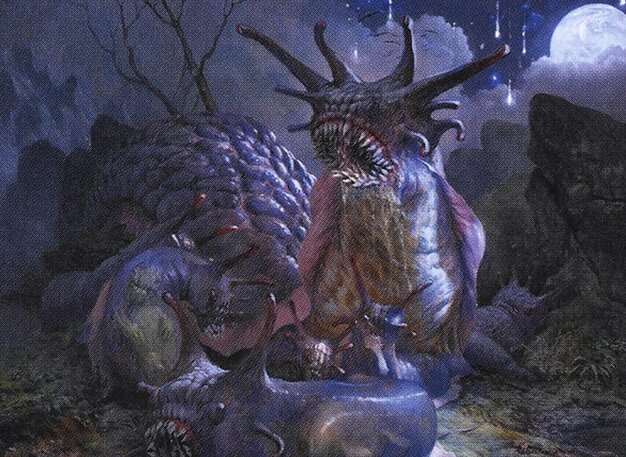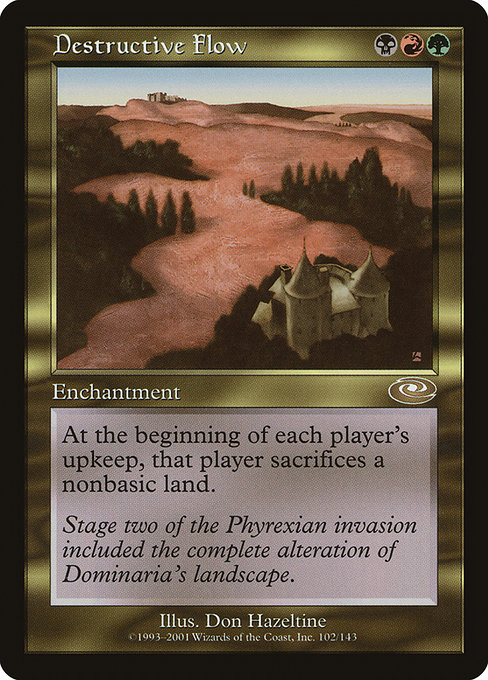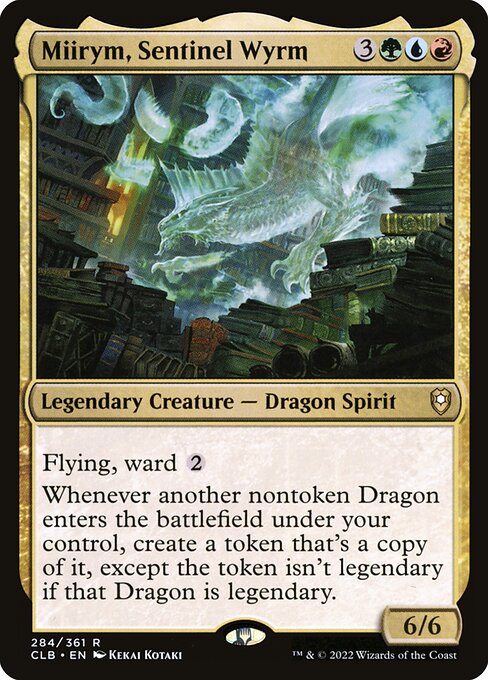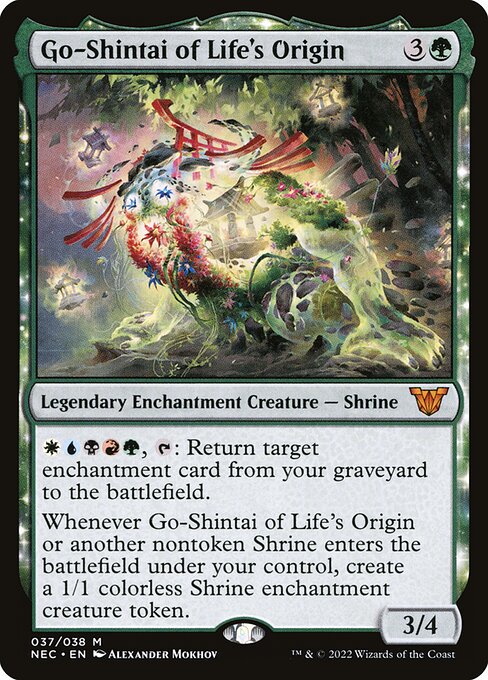Deck & Commander Strategies

Toxrill, the Corrosive
Develop a slug token army with graveyard recursion, leveraging fast mana to flood the board and outlast opponents through incremental damage and attrition.

Go-Shintai of Life's Origin
Build a shrine enchantment-based board that generates token creatures and recurs enchantments, using synergy to control the board and apply steady pressure.

Miirym, Sentinel Wyrm
Exploit the cost reduction to deploy powerful dragons early, aiming to overwhelm opponents with flying threats and capitalize on the dragons’ token-copying ability.

Gandalf the Grey
Use bounce effects and control elements to disrupt opponents while leveraging value creatures and incremental advantage to maintain board presence and tempo.
Gameplay Insights
- 1
Players prioritized ramp and setting up their mana bases early to take advantage of the cost reduction and the chromatic lantern, enabling quick deployment of threats.
- 2
The use of destructive enchantments that punished untapped lands and forced land sacrifices created significant pressure on non-basic land strategies.
- 3
Monarch mechanic was used strategically to gain card advantage and deploy creatures or lands untapped, influencing combat and board control decisions.
- 4
Toxrill’s slug token generation and graveyard recursion forced opponents to consider board wipes carefully, as token swarms could quickly spiral out of control.
- 5
Miirym’s ability to create non-legendary dragon tokens when a dragon entered the battlefield introduced a powerful token synergy that could challenge board control.
- 6
Gandalf’s bounce effects allowed for flexible responses, protecting key creatures or reusing enter-the-battlefield effects to maintain tempo.
Notable Cards
-

Citadel of Pain
-

Destructive Flow
-

Goblin Electromancer
-

Court of Bounty
-

Arcane Signet
Gameplay Summary
The game began with all players leveraging the special rules of MOX Lantern and the Fire cell cost reduction, creating a fast-paced and mana-efficient environment.
Early turns involved setting up ramp and board presence, with players casting key utility creatures and enchantments.
Toxrill, the Corrosive aimed to build a slug-based army with graveyard recursion, while Go-Shintai of Life's Origin focused on generating shrine creature tokens through enchantments.
Miirym, Sentinel Wyrm sought to deploy powerful dragons quickly, taking advantage of the cost reduction.
Gandalf the Grey played a control-oriented deck with bounce effects and disruption. A pivotal moment came when destructive enchantments such as Citadel of Pain and Destructive Flow were played, pressuring opponents by damaging them and forcing sacrifices of non-basic lands.
The interaction between shrine token generation and enchantment recursion proved effective but vulnerable to board wipes and land destruction.
Toxrill’s slug tokens and graveyard synergies presented a growing threat, while Miirym’s dragons promised a late-game power spike.
Combat damage swings and the struggle for the Monarch role added layers of political tension and control.
The game’s tempo shifted as players balanced board development with tactical removal and mana management, setting the stage for a climactic conflict around Toxrill’s slug army and Go-Shintai’s shrine tokens.




























![Multicolored Legends of Baldur's Gate [Commander VS 295] | Magic: the Gathering Commander Gameplay thumbnail](https://i.ytimg.com/vi/zAq9d0hwHTU/sddefault.jpg)













![Gandalf vs Urza vs Averna vs Dihada [EDH/Commander, Magic the Gathering Gameplay 2023] thumbnail](https://i.ytimg.com/vi/5CXLiWw55PA/sddefault.jpg)
![Everything is Fine. Don’t Click this Video, ft. Purphoros, Gandalf, Akiri, Braids [MTG EDH Gameplay] thumbnail](https://i.ytimg.com/vi/lBhszeoeVoc/sddefault.jpg)
![Battle for the One Ring, ft. Frodo, Bilbo, Tom, and Gandalf [EDH/Commander Gameplay 2023] thumbnail](https://i.ytimg.com/vi/eBY9qYO50o4/sddefault.jpg)
